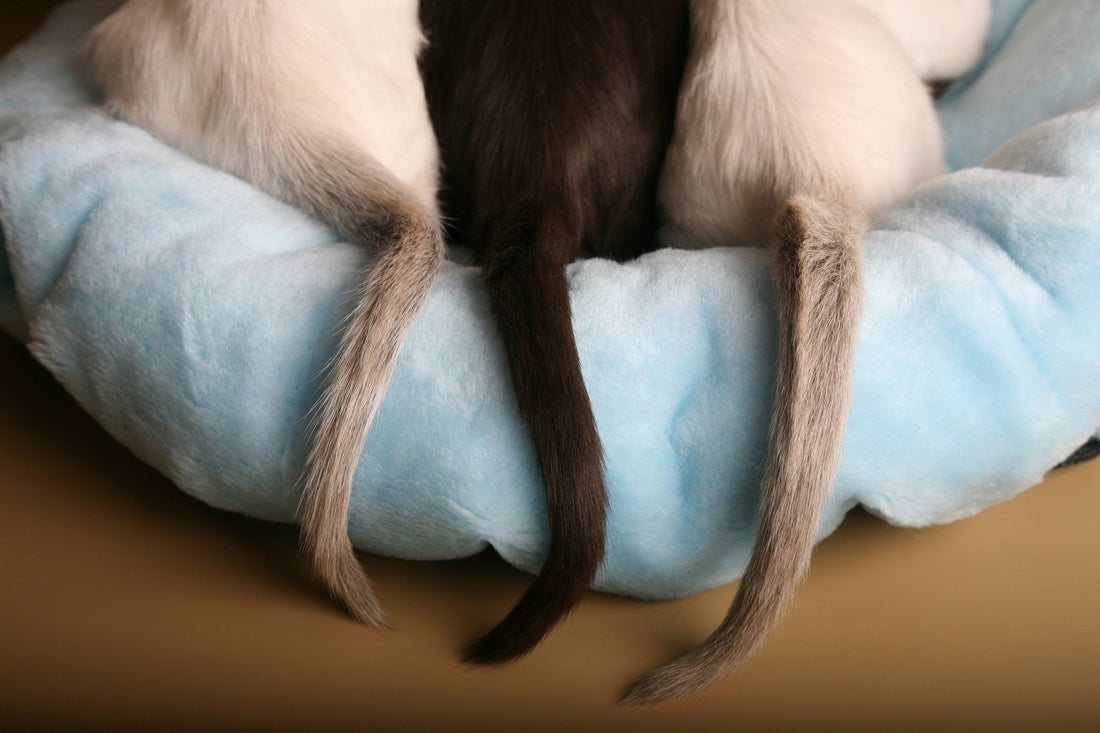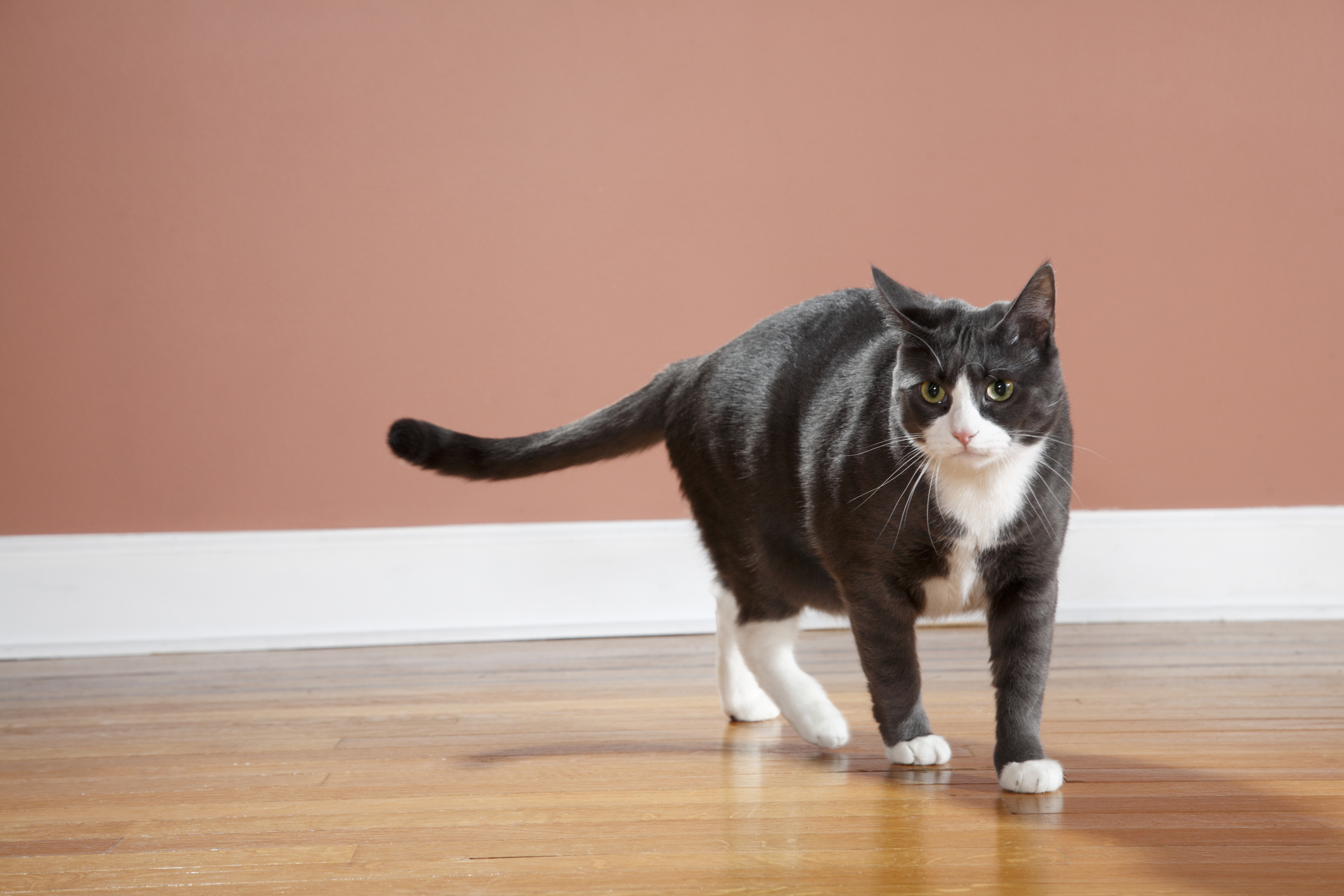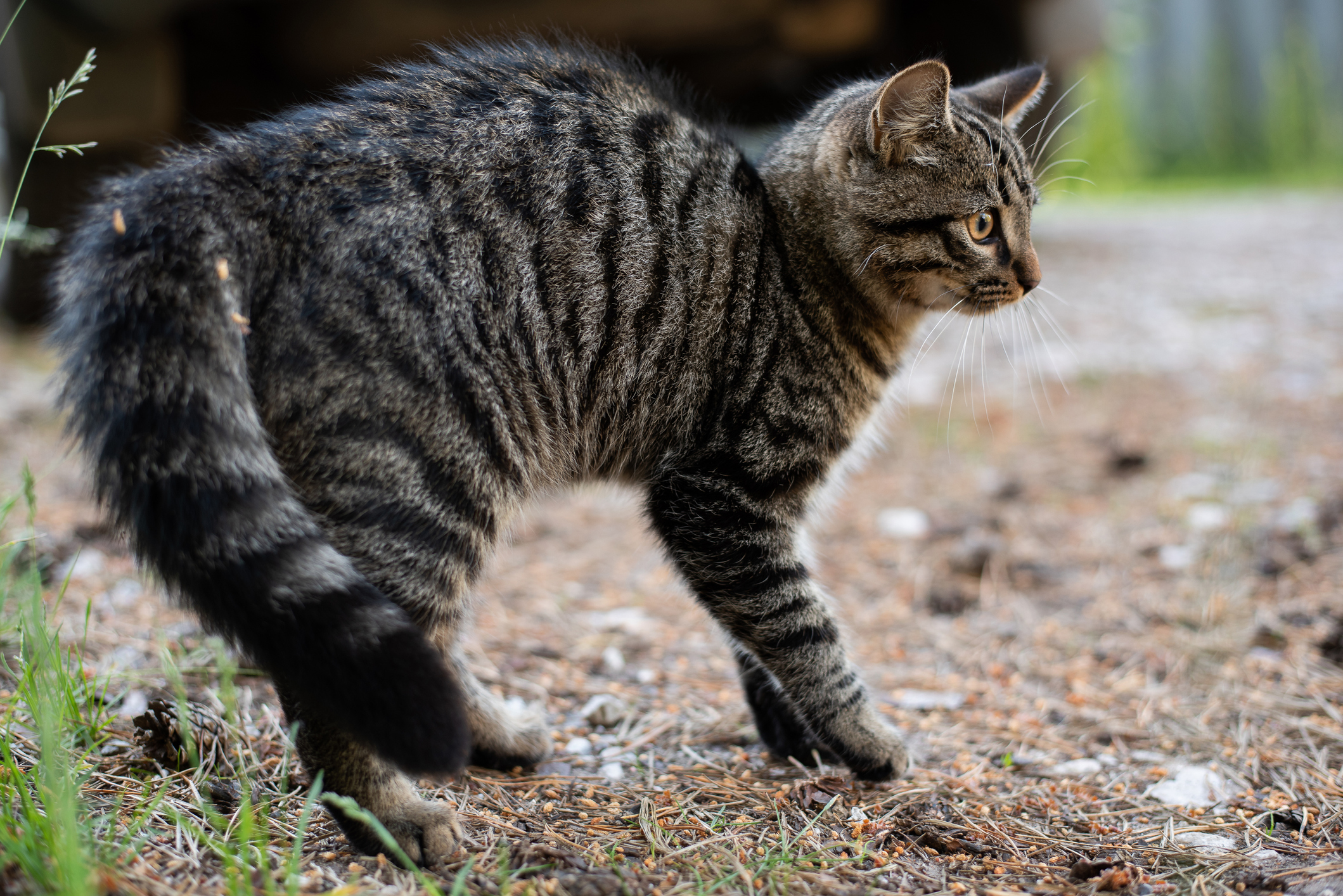
Understand Your Cat's Tail Language to Read Their Mood
It may seem like your cat’s tail has a mind of its own, swishing and flicking at seemingly random points—even when your kitty is sleeping! But your cat’s tail is very much in tune with what they are thinking and feeling. In fact, it can be a great indicator for your cat’s mood!
Long, short, furry or bald—cats’ tails come in all shapes and sizes. However, these interesting body parts speak a universal language. Cats use their tail’s visual cues to send messages to other cats, but humans can take advantage of these signs, as well. By learning how to speak your cat’s tail language, you’ll be able to cater to their needs more effectively.
Cat tail language might be displayed in a few different ways. Most important are the position the tail is held in and the movement it displays.
Tail position cues
The position your feline friend holds their tail in can tell you a lot about how they’re feeling at a given moment. Here are some of the most common tail positions and what they can mean.

- Neutral: Your cat’s “default” tail posture is most likely held gently behind them and curved slightly as they walk. This usually means that your cat is feeling content and relaxed—not too excited, but not nervous or angry, either.
- Relaxed and high: If your cat is holding their tail high and straight, this means they are feeling happy and confident. The high tail is generally a sign of alertness, but in this case, it’s a positive! If the end of their tail is curved or hooked while it’s held straight, they might be happy but somewhat unsure or curious.
- Stiff and straight: If your cat is holding their tail completely straight out behind them or low to the ground, they are probably feeling alert and aggressive. If this posture is accompanied by strong thrashing, your cat may lash out if approached.
- Tucked: When your cat tucks their tail between their legs while standing, this often shows that they are feeling threatened. It’s an extremely defensive posture that may turn aggressive if they are approached. Similarly, your cat might be feeling anxious if they wrap their tail tightly around their body while sitting or lying down.
- Puffed out: A literal “scaredy cat” might show their fear with an extremely puffed-out tail. The hair might stand on end, making the tail look multiple times larger than its usual size. This typically happens after your cat gets spooked suddenly. If the tail is held high while puffed up, your cat might be agitated and trying to look bigger to ward off danger.

Tail movement meanings
Tail position can tell you a lot about your cat, but the way it moves can give you even greater insight into how your kitty is feeling. These common movements, combined with a particular tail position, can help you and your cat communicate without words.
- Swishing gently: Happy cats will usually display some form of tail movement, but it won’t be overly aggressive or fast. If you notice your cat’s tail gently swishing back and forth in a fluid motion, or wagging, they are likely feeling happy or content.
- Twitching: An occasional twitch of the end of the tail might indicate your cat’s alertness and concentration. This might occur when your cat is watching a bird while perched near a window or when getting ready to pounce on a toy nearby.
- Whipping: If your cat’s entire tail is whipping back and forth quickly or strongly, it typically means they are feeling scared or aggressive. This movement might also appear as “thumping” and may even make a noise as it bumps into the ground or furniture. Some cats will flick their tails strongly during play because they are excited, but handling a cat who is displaying this behavior might agitate them and result in an aggressive reaction.
- Vibrating: Some owners have noticed that their cats’ tails seem to vibrate or quiver quickly. Although you may think this indicates fear or anxiety, in many cases, it actually indicates excitement and playfulness. Tail vibrations often occur when your cat gets extremely happy or wants to play—just make sure the tail’s position follows suit!
Cats tend to display similar body language as a general rule, but every cat is a little different. Additionally, other factors might play into how your cat is feeling. You don’t want to judge their mood solely on their tail! Consider other body language, including their ears and eyes, to get the entire picture and react to them appropriately.


